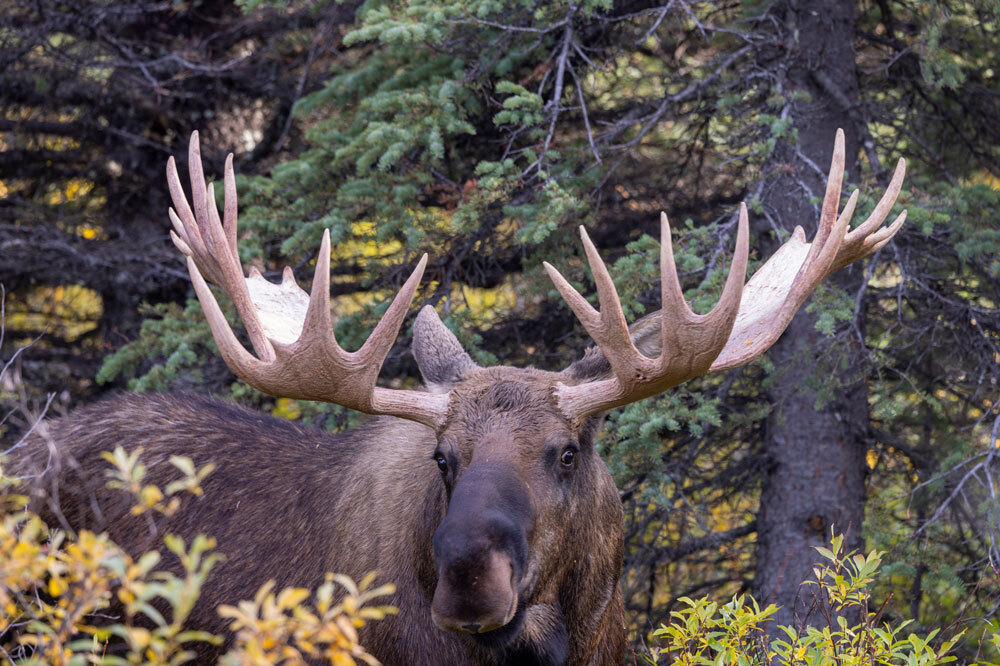The Alaska‑Yukon moose (Alces alces gigas) is the largest subspecies of moose and one of the world’s largest deer. Adult moose weigh between 800 pounds for small cows and up to 1,600 pounds for large bulls, and stand nearly six feet tall at the shoulder. Coat colour ranges from golden brown to almost black, depending on age and season. Bulls carry massive antlers produced annually; trophy antlers typically come from 10‑ to 12‑year‑old bulls. These giants roam boreal forests, river valleys and tundra from western Alaska through the Yukon Territory.

Hunting Alaska‑Yukon moose is an expedition requiring remote travel and physical endurance. Non‑resident hunters must hire a registered guide or hunt with a close relative. Most hunts occur during the rut from early September to early October when bulls respond to cow calls and antler raking. Guides use floatplanes, boats or horses to access river drainages, then call and glass from ridgelines or riverbanks. Shots may be taken at 50–300 yards, and hunters should be prepared to pack hundreds of pounds of meat and antlers through boggy terrain. In some unit,s there are earlier seasons for meat hunts in August and later winter hunts that allow antlerless harvest for residents.
Alaska’s moose population is estimated at 175,000–200,000 animals, with the largest bulls found in western Alaska. Harvest is regulated by game units with strict quotas, antler size restrictions and draw permits to conserve mature bulls. Habitat quality and winter severity influence calf survival; harsh winters and wolf predation can limit populations. Well‑managed trophy hunts generate significant revenue for rural communities and fund wildlife research. Moose remain culturally important to Indigenous peoples, providing meat, hides and bone tools.
Bulls grow antlers each summer and shed them in late winter; antlers begin as velvet‑covered bone that hardens before the rut and are shed after breeding. Moose consume 50–60 pounds of vegetation per day, including willows, birches, aquatic plants and emergent sedges. They are strong swimmers and often browse on aquatic plants; their long legs and splayed hooves allow them to navigate bogs and deep snow. Despite their size, moose are nimble and can run 35 mph for short distances. Because moose cause more human injuries in Alaska than bears, hunters must be cautious when approaching wounded animals.
Alaska Yukon Moose can be found in the following location:
Alaska Yukon Moose has the following variations:
- (Varieties to be confirmed)
Start Your Adventure



